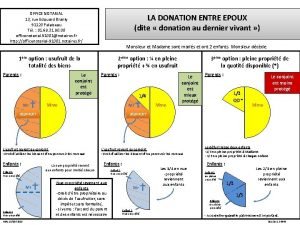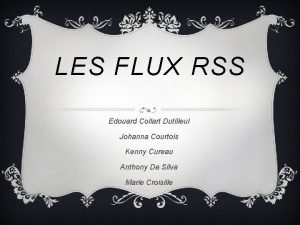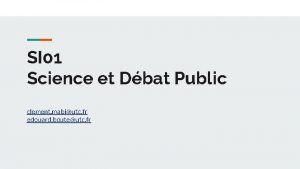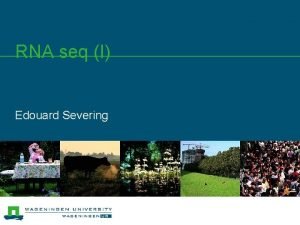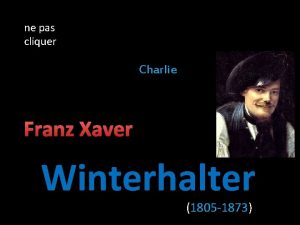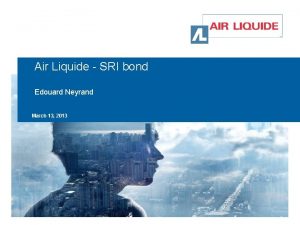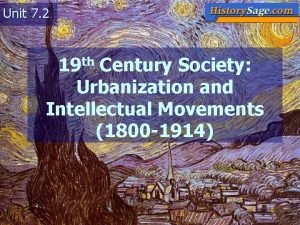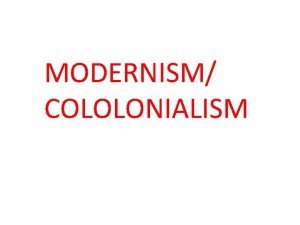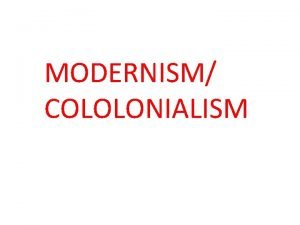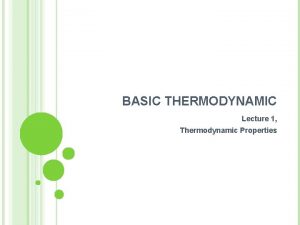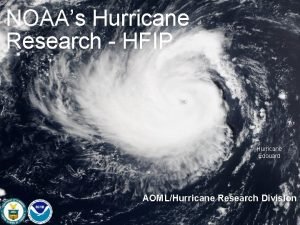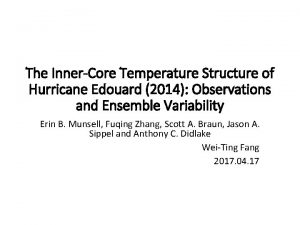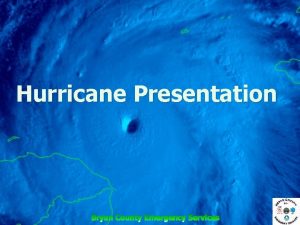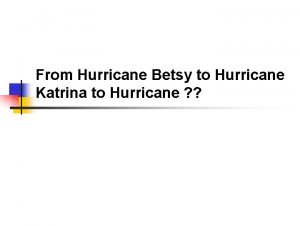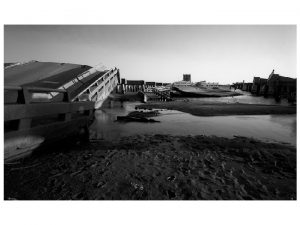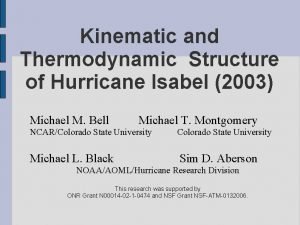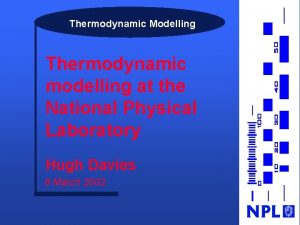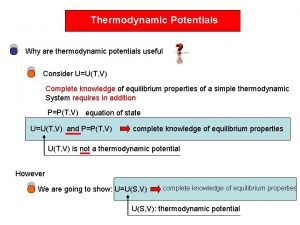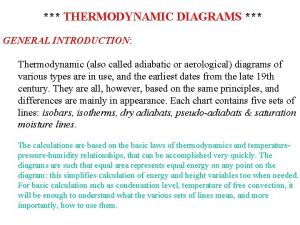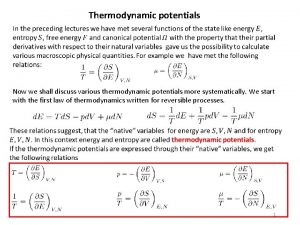The thermodynamic structure of Hurricane Edouard 2014 An















- Slides: 15

The thermodynamic structure of Hurricane Edouard (2014): An ensemble perspective Erin Munsell Summer 2016 Group Meeting August 19 th, 2016

Ensemble Tracks classified by performance SST’s contoured (constant amongst members) Munsell et al. 2016, In review Maximum 10 -m Wind Speed (kts) classified by performance Best Track – Black GOOD – Blue GOOD_EARLY – Green GOOD_LATE – Magenta POOR – Red

HS 3 Edouard Dropsonde Positions (to determine inner-core sondes) Flight #1 Flight #2 Flight #3 Flight #4

HS 3 Edouard Dropsonde Perturbation Temperatures (°C) Flight #1 Flight #2 Flight #3 Flight #4

HS 3 Edouard Flight #3 Dropsonde Perturbation Temperatures (°C) – Colored by distance from center Mean Distance from Center (km)

Modeled vs. (Raw Data) Observations (Flight 3) Dropsondes S-HIS AMSU Temperature Perturbations (°C) GOOD From RAMMB/CIRA

Tracks, Minimum SLP (h. Pa), and Maximum 10 -m Wind Speeds (kts) for GOOD_EARLY, GOOD_LATE, POOR, and APSU (extended to 12 UTC 17 September 2014)

Edouard WRF-En. KF Perturbation Temperatures (°C) – 09/17/14 at 00 UTC GOOD_LATE POOR Temperature Perturbations (°C) GOOD_EARLY

Edouard WRF-En. KF Perturbation Temperatures (°C) – Time/Height GOOD_LATE POOR Temperature Perturbations (°C) GOOD_EARLY

Edouard Warm Core Structure at 18 Z Sept 16 2014 – GOOD

Edouard Warm Core (within 25 -km radius) Evolution – GOOD

Correlation between height and strength of maximum temperature perturbation (within 25 -km from Edouard’s center) and RI time and current intensity (minimum SLP)

Correlation between temperature perturbation (averaged within 25 -km of Edouard’s center) and RI time (of three developing composite groups) Correlation between temperature perturbation (averaged within 25 -km of Edouard’s center) and current intensity (minimum SLP of three developing composite groups)

Scatterplot of Height of Maximum Temperature Perturbation (km; within 25 -km from Edouard’s surface center) for the 40 members of the composite groups over time Scatterplot of Strength of Maximum Temperature Perturbation (km; within 25 -km from Edouard’s surface center) for the 40 members of the composite groups over time

Summary and Conclusions • Utilize wealth of HS 3 observations and PSU WRF-En. KF ensemble forecast of Hurricane Edouard (2014) to examine the evolution and variability of Edouard’s warm core structure, particularly throughout its RI period • Four HS 3 flights into Edouard – Flight 3 temperature perturbations suggest two possible perturbation structures • 1) a mid-tropospheric maxima between 4– 6 km and a slightly weaker but distinct upper-tropospheric maxima between 10– 12 km (as in many of the Earl sondes in Stern and Zhang (2016)) – likely in the eye, closest to the center • 2) a single maxima (slightly weaker than either of the maxima in 1) between 8– 10 km – farther from center, perhaps eyewall • Temperature perturbation structure of GOOD composite at 00 Z 17 Sept 2014 (during HS 3 Flight #3) compares mostly favorably to observations • Area-averaged temperature perturbations begin developing in the lower to mid-troposphere (between 2– 6 km) and build upwards – development is mostly confined to AFTER RI time • Correlation analyses support these conclusions, however, once all developing composites begin RI, there is little relationship between height of maximum temperature perturbation and RI time/current MSLP

